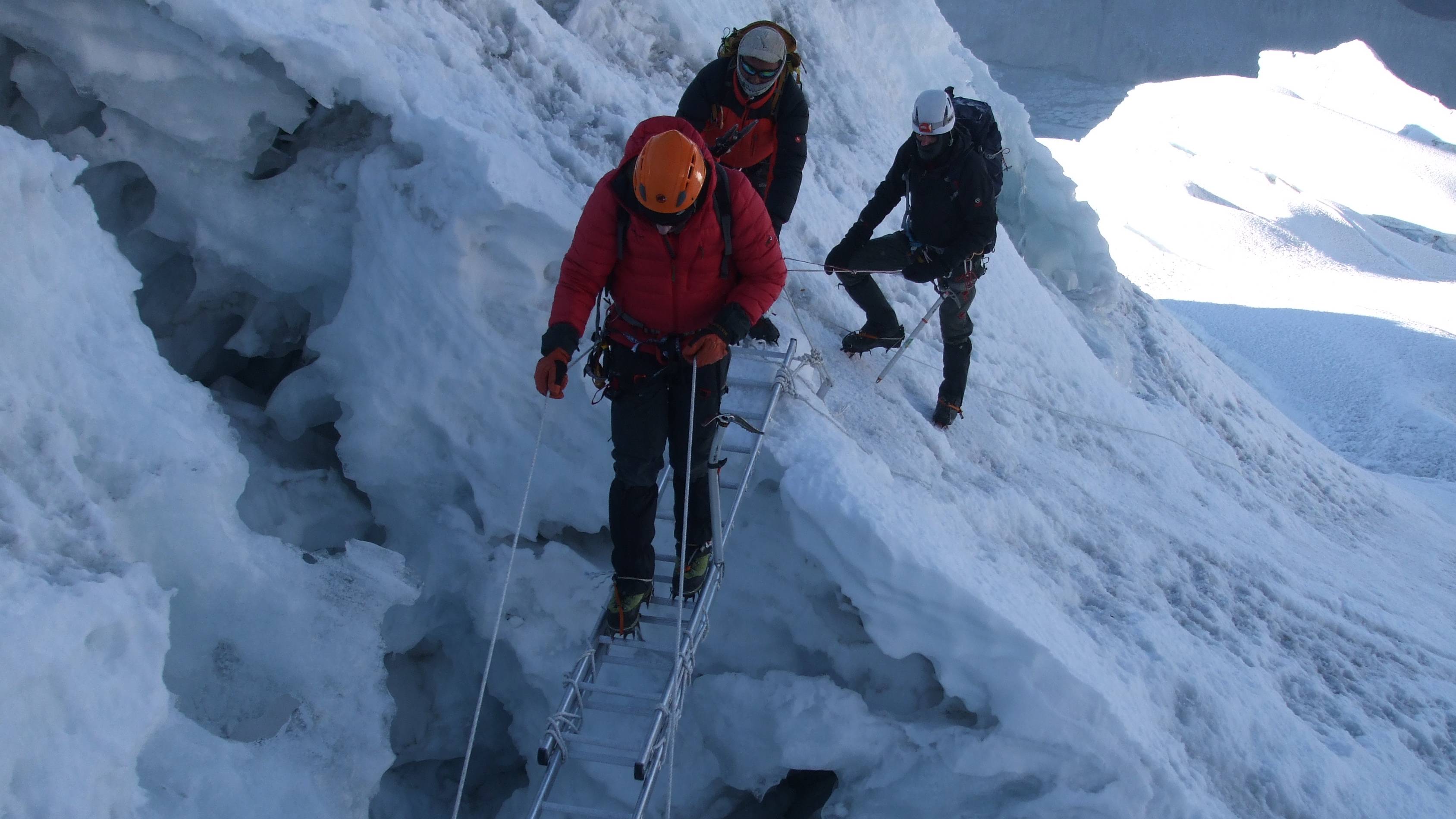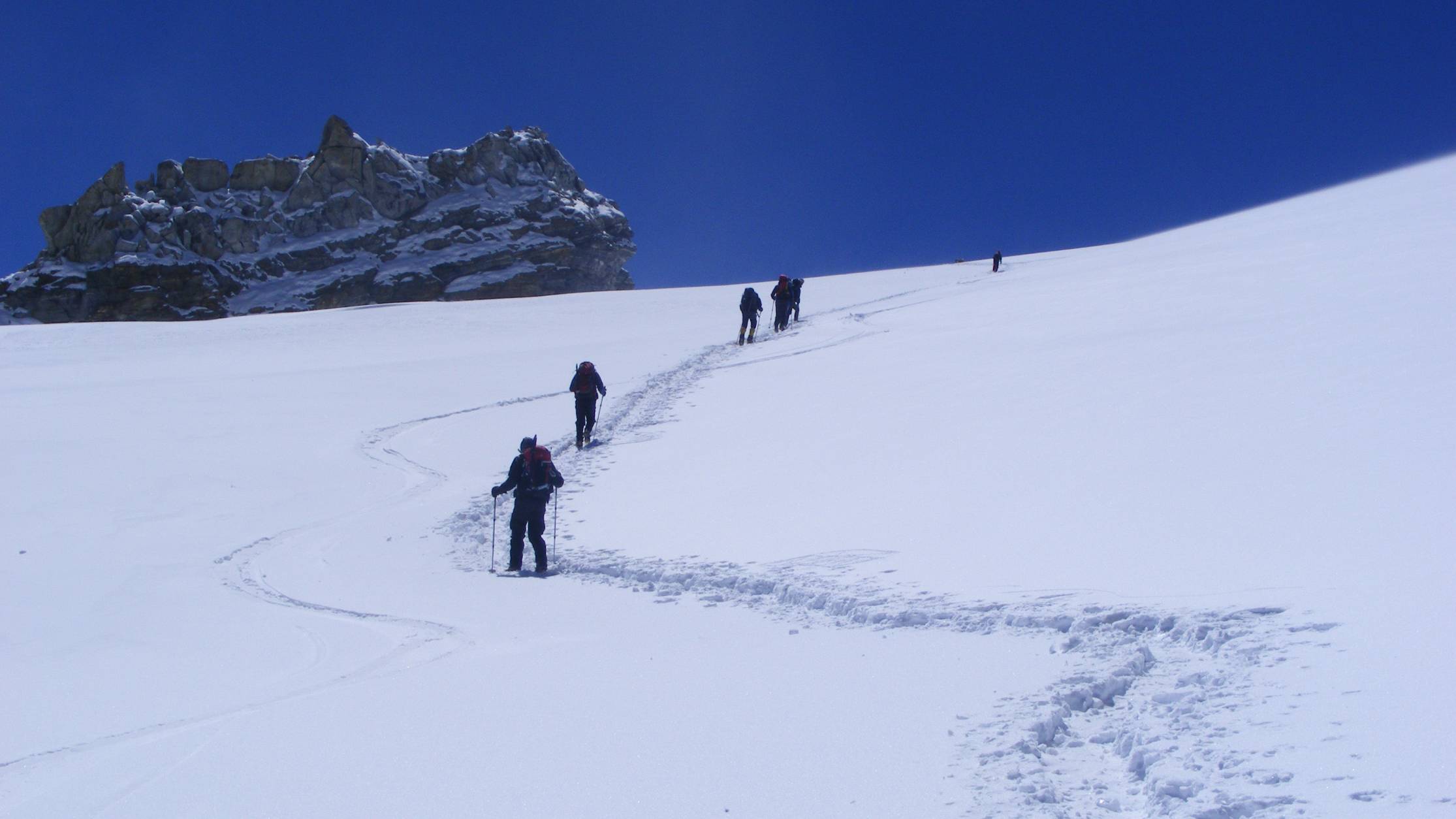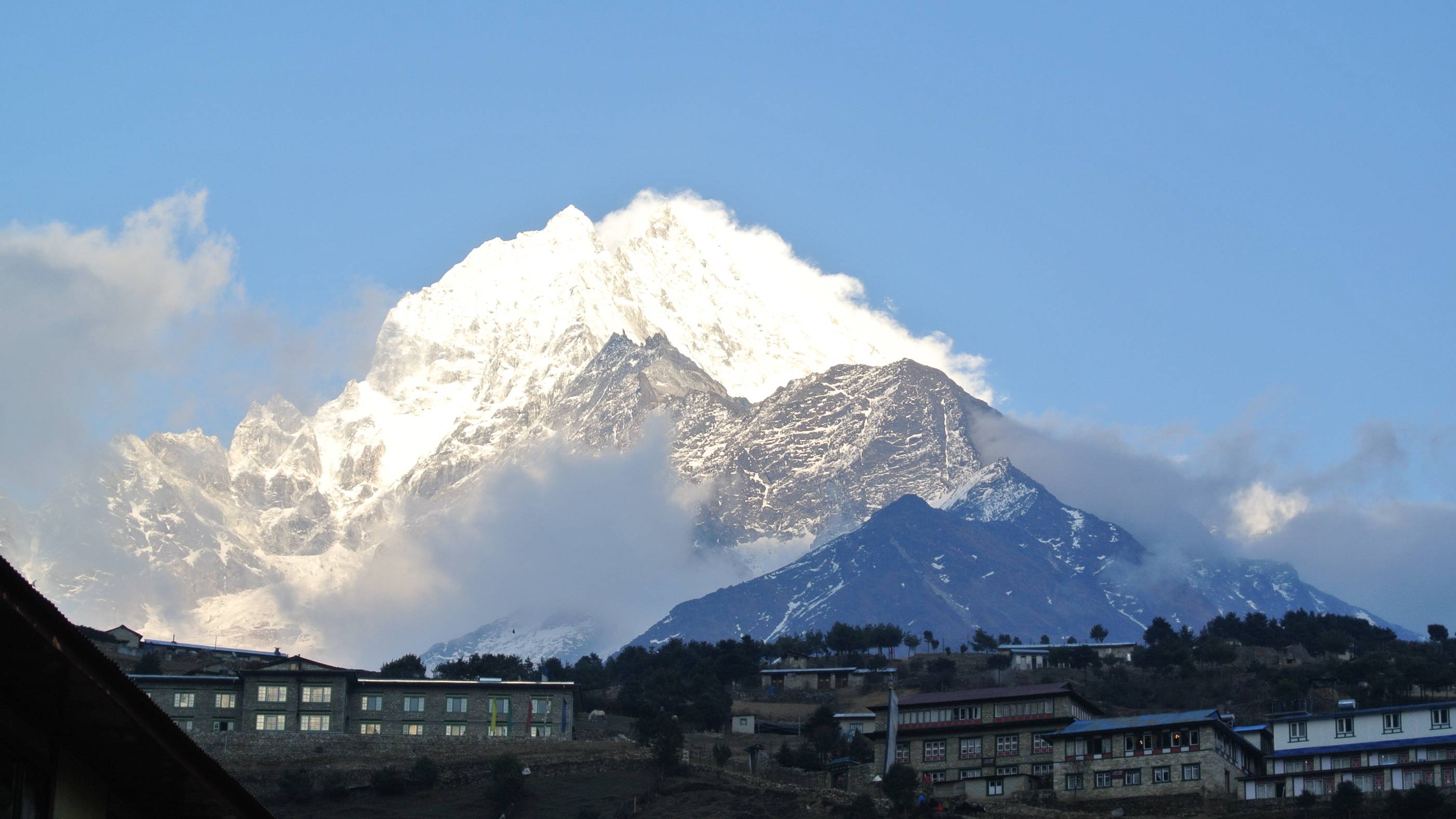For adventure seekers and mountaineering enthusiasts, the allure of the Himalayas is irresistible. Among the numerous peaks that grace this majestic range, Island Peak, Mera Peak, and Lobuche Peak stand out as popular destinations for climbers. Let's explore the challenges and rewards of these exhilarating expeditions.
Island Peak Climbing takes adventurers to the heart of the Khumbu region in Nepal. Also known as Imja Tse, this impressive peak offers a fantastic opportunity for climbers to experience both trekking and climbing in one unforgettable journey. With its elevation reaching 6,189 meters, Island Peak provides a taste of high-altitude mountaineering while surrounded by breathtaking views of Everest, Lhotse, and Ama Dablam.
Climbing Island Peak requires basic mountaineering skills, including the use of crampons and ice axes, as well as a good level of physical fitness. The expedition involves traversing glaciers, ascending steep snow slopes, and navigating a challenging summit ridge. The reward is a panoramic vista that includes the stunning Khumbu Valley and the surrounding Himalayan peaks, leaving climbers with a profound sense of accomplishment.
Moving to the Mera Peak Climbing, adventurers venture into the remote Hinku Valley in the Everest region. Standing tall at 6,476 meters, Mera Peak offers a thrilling and less crowded experience compared to some of its neighboring peaks. This expedition is perfect for climbers looking to push their limits and embark on a challenging journey in the heart of the Himalayas.
Ascending Mera Peak requires basic mountaineering skills and the ability to negotiate crevassed glaciers and steep snow slopes. The climb is rewarded with breathtaking panoramic views of five of the world's highest mountains: Everest, Kanchenjunga, Makalu, Lhotse, and Cho Oyu. The expedition also provides an opportunity to immerse oneself in the unique culture of the Sherpa people and explore the stunning landscapes of the Everest region.
Finally, Lobuche Peak Climbing takes climbers to the beautiful Khumbu Valley in Nepal. With its two distinct peaks, Lobuche East (6,119 meters) and Lobuche West (6,145 meters), this expedition offers a challenging and rewarding experience for mountaineers. The climb provides stunning views of Everest, Nuptse, Lhotse, and the surrounding Himalayan giants.
Scaling Lobuche Peaks demands technical mountaineering skills, including the use of ropes and ice axes, as well as experience in glacier travel and high-altitude acclimatization. The ascent involves negotiating steep snow and ice slopes and tackling a challenging summit ridge. Upon reaching the summit, climbers are rewarded with a remarkable 360-degree panorama of the Himalayan landscape, making the journey well worth the effort.
In conclusion, Island Peak, Mera Peak, and Lobuche Peak Climbing expeditions offer thrilling adventures and incredible vistas for mountaineering enthusiasts. These expeditions require a combination of physical fitness, technical skills, and mental determination. Whether it's the allure of Island Peak's panoramic views, the remote and less-crowded experience of Mera Peak, or the technical challenges of Lobuche Peak, each expedition promises an unforgettable adventure in the breathtaking Himalayas.



